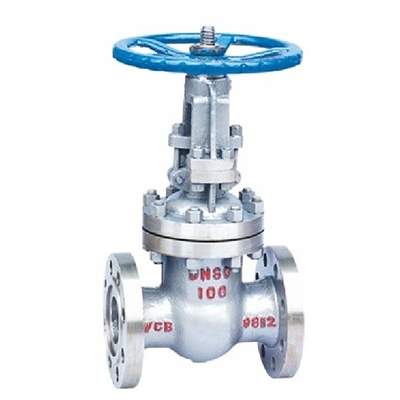Welcome to My Blog!
Before we dive into the content, I’d love for you to join me on my social media platforms where I share more insights, engage with the community, and post updates. Here’s how you can connect with me:
Facebook:https://www.facebook.com/profile.php?id=61563865935136
Now, let’s get started on our journey together. I hope you find the content here insightful, engaging, and valuable.
Introduction

In industries where fluid management is critical, achieving precise flow control is paramount. Stainless gate valves have emerged as a cornerstone in ensuring efficient and reliable fluid regulation across various applications, from oil and gas to water treatment. These valves are designed to either fully open or fully close the flow, offering minimal resistance when open and a tight seal when closed. Their robust construction and corrosion-resistant properties make them a preferred choice for demanding environments. This blog explores how stainless gate valves enhance flow control, delving into their design, benefits, and applications, while providing insights into their role in optimizing industrial processes.
Understanding the Design of Stainless Gate Valves
Stainless gate valves are engineered with a gate or wedge that moves perpendicular to the flow of the fluid. This design allows for a straight-through flow path, reducing turbulence and pressure drop. The valve’s body, typically made from stainless steel, ensures durability and resistance to harsh conditions, such as high temperatures or corrosive substances. Key components include the gate, stem, bonnet, and seat, all of which contribute to the valve’s ability to provide precise on-off control. Unlike other valve types, such as globe or ball valves, stainless gate valves are not designed for throttling but excel in applications requiring complete flow isolation.
Materials Used in Stainless Gate Valves
The primary material, stainless steel, is chosen for its strength and resistance to corrosion. Grades like 304 and 316 stainless steel are common, with 316 offering superior resistance to chlorides and acidic environments. The choice of material impacts the valve’s longevity and performance, especially in industries like chemical processing or marine applications. Additional components, such as seals and gaskets, are often made from materials compatible with the fluid being handled, ensuring a leak-proof operation.
Key Features Enhancing Flow Control
Stainless gate valves are equipped with features that optimize flow control. The wedge-shaped gate ensures a tight seal, preventing leaks when the valve is closed. The non-rising stem design, commonly used in compact systems, minimizes space requirements while maintaining functionality. Additionally, the low-friction design of the gate reduces wear and tear, ensuring consistent performance over time. These features collectively contribute to reliable flow regulation in critical systems.
Benefits of Using Stainless Gate Valves in Industrial Applications
The advantages of stainless gate valves extend beyond their basic function. Their durability ensures long-term performance, reducing maintenance costs. The corrosion-resistant properties make them suitable for handling aggressive fluids, such as those found in chemical plants or wastewater facilities. Furthermore, their ability to provide a full-bore flow path minimizes energy losses, enhancing system efficiency. These benefits make stainless gate valves a cost-effective solution for industries prioritizing reliability and performance.
Corrosion Resistance for Harsh Environments
One of the standout qualities of stainless gate valves is their ability to withstand corrosive environments. Stainless steel’s resistance to rust and chemical degradation ensures the valve remains functional even in challenging conditions, such as seawater exposure or acidic fluid handling. This durability reduces the risk of valve failure, which could lead to costly downtime or environmental hazards.
Low Maintenance and Longevity
The robust construction of stainless gate valves translates to minimal maintenance requirements. Their resistance to wear and corrosion means fewer replacements and repairs, making them a long-term investment for industrial systems. Regular inspections and basic upkeep are often sufficient to keep these valves operational for decades.
Applications of Stainless Gate Valves in Various Industries
Stainless gate valves are versatile, finding applications across multiple sectors. In the oil and gas industry, they are used to control the flow of crude oil, natural gas, and refined products. Water treatment plants rely on them for isolating pipelines during maintenance or controlling water flow. Chemical processing facilities utilize these valves to manage corrosive liquids, while food and beverage industries benefit from their hygienic properties. The adaptability of stainless gate valves makes them indispensable in ensuring operational efficiency.
Specific Use Cases in Water Treatment
In water treatment, stainless gate valves are critical for isolating sections of pipelines during maintenance or emergencies. Their ability to provide a tight seal prevents contamination, ensuring the purity of treated water. These valves are also used in desalination plants, where their corrosion resistance is essential for handling saline water.
Role in Oil and Gas Pipelines
In oil and gas pipelines, stainless gate valves are employed to control the flow of hydrocarbons. Their ability to handle high-pressure and high-temperature fluids makes them ideal for upstream and downstream operations. The valves’ reliability ensures safe and efficient transport of resources over long distances.
Technical Specifications of Stainless Gate Valves
| Parameter | Description |
|---|---|
| Material | Stainless steel (304, 316, or other grades) |
| Size Range | 1/2 inch to 48 inches, depending on application |
| Pressure Rating | ANSI Class 150 to 2500, suitable for low to high-pressure systems |
| Temperature Range | -50°F to 1000°F (-46°C to 538°C), depending on material and design |
| End Connections | Flanged, threaded, or welded, based on installation requirements |
| Operation | Manual (handwheel), pneumatic, or electric actuator |
| Standards Compliance | API, ASME, ISO, and other industry standards for safety and performance |
This table outlines the typical specifications of stainless gate valves, highlighting their versatility and suitability for various industrial needs. These parameters ensure that the valves can be tailored to specific applications, enhancing flow control efficiency.
Installation and Maintenance Best Practices
Proper installation and maintenance are crucial for maximizing the performance of stainless gate valves. During installation, ensure proper alignment to prevent stress on the pipeline. Use appropriate gaskets and bolts to secure flanged connections, and verify that the valve is compatible with the system’s pressure and temperature ratings. Regular maintenance involves checking for leaks, inspecting the gate and seat for wear, and lubricating the stem to ensure smooth operation. These practices extend the valve’s lifespan and maintain optimal flow control.
Common Installation Challenges
Misalignment during installation can lead to leaks or operational issues. To avoid this, use precision tools to align the valve with the pipeline. Additionally, ensure that the valve is not subjected to excessive torque, which could damage the stem or gate. Proper training for installation teams is essential to address these challenges effectively.
Maintenance Tips for Optimal Performance
Routine maintenance includes cleaning the valve to remove debris, checking for corrosion, and replacing worn seals. For valves in corrosive environments, more frequent inspections may be necessary. Keeping a maintenance log helps track performance trends and identify potential issues before they escalate.
Comparing Stainless Gate Valves with Other Valve Types
While stainless gate valves excel in on-off flow control, other valve types, such as ball or butterfly valves, may be better suited for specific applications. Ball valves offer faster operation, while butterfly valves are more compact. However, stainless gate valves provide superior sealing and minimal pressure drop, making them ideal for applications requiring complete flow isolation. Understanding these differences helps industries select the right valve for their needs.
When to Choose Stainless Gate Valves
Stainless gate valves are the best choice when full flow or complete shutoff is required. They are less suitable for throttling, as partial opening can cause gate vibration and wear. For systems where precise flow regulation is not needed, these valves offer unmatched reliability and efficiency.
Environmental and Economic Impacts

Using stainless gate valves contributes to both environmental and economic benefits. Their durability reduces the need for frequent replacements, lowering material waste. The energy efficiency gained from minimal pressure drop supports sustainable operations. Economically, the long lifespan and low maintenance costs of these valves reduce operational expenses, providing a strong return on investment for industries.
Sustainability in Valve Selection
Choosing stainless gate valves aligns with sustainability goals due to their recyclability and long service life. Stainless steel is fully recyclable, reducing the environmental footprint of valve production. Additionally, their reliability minimizes the risk of leaks, preventing environmental contamination.
Conclusion
Stainless gate valves are a reliable, durable, and efficient solution for achieving precise flow control in demanding industrial applications. Their corrosion resistance, low maintenance requirements, and ability to handle a wide range of fluids make them a top choice for industries worldwide. By investing in these valves, businesses can enhance operational efficiency, reduce costs, and support sustainable practices. For more information or to explore our range of high-quality stainless gate valves, contact us today to find the perfect solution for your flow control needs.
FAQ
What are stainless gate valves used for?
Stainless gate valves are used to start or stop the flow of fluids in pipelines, providing a tight seal for complete shutoff. They are ideal for applications in oil and gas, water treatment, and chemical processing.
How do stainless gate valves improve flow control?
These valves offer a full-bore flow path, minimizing pressure drop and turbulence, while their robust design ensures reliable operation in demanding conditions.
Are stainless gate valves suitable for corrosive environments?
Yes, their stainless steel construction makes them highly resistant to corrosion, ideal for handling aggressive fluids like seawater or chemicals.
